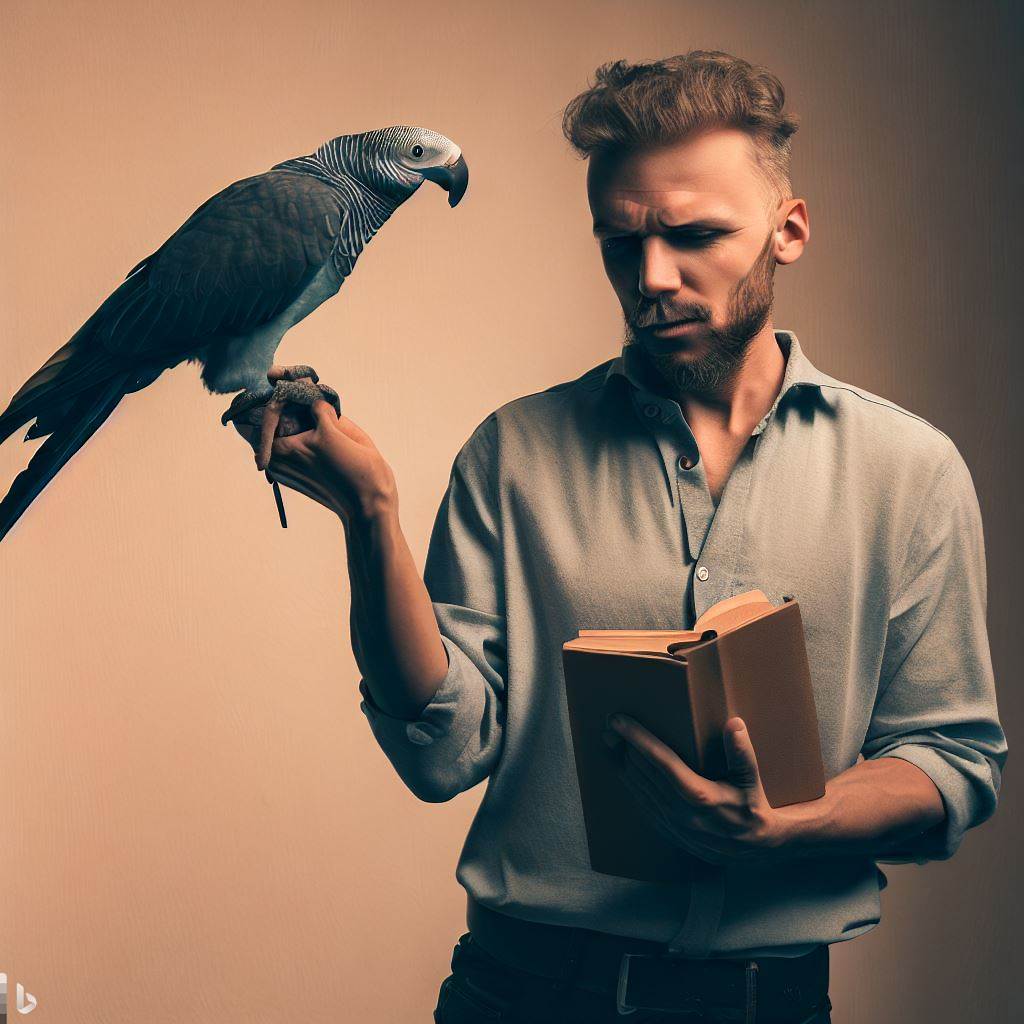
Weekends, days off, holidays are all only vague memories now. I doubt if I would have been as dedicated as I am now had I started at a younger age. But when the show starts and the birds all seem so eager and excited about performing, the headaches and personal problems disappear and each show is like the first one all over again, new and fresh and always different.
I am also lucky because my mentor happens to be my boyfriend and we work together as a team. Doug has been training animals professionally for almost 30 years now. Learning “hands on” has been an awesome experience.
A typical day for us is getting up letting the birds out of their cages to stretch and play, cleaning, feeding, interacting with, training, showtime, more play time, more cleaning, and feeding, showtime and so on. Then there is the wing clipping, nail clipping and all the other husbandry work that goes along with aviculture. Of course, then we go home and spend more time with birds!
Training, and scripting the show is a big part of the whole picture as well. There is a lot of time and effort envolved in putting together a 20 to 25 minute show. Besides the training, personalities of the birds have to be considered. Everything is well thought out, from who does what behavior and when, to the positioning of each bird. We let our birds decide among themselves who they like and don’t like. Each performer has his own t-stand. Birds that don’t get along that well are placed away from each other, ones that get along well are placed near each other.
As far as how we decide which birds to train, we prefer birds that will take treats readily, and have outgoing personalities. We have also trained some of the birds we hand raised to be in the show. We gave them a good foundation in their early positive reinforcement training at home before we started their “formal training”.
We normally present three shows a day, seven days a week in the summer. To keep the birds from getting “burned out”, we teach several birds to do virtually every behavior. That way we can give the birds a day off, or rotate them for the shows. We have the birds “take turns” , so they aren’t doing two or three behaviors in a row. We allow some contact with the birds, but only at our discretion. If we feel the birds aren’t up to it, we simply don’t allow it. Most often the birds really seem to like the public contact and attention.

Natural behaviors include wings spread, climbing, turning around. While the shows are presented the same way, they are never the same. The birds have made the show their own as much by their own personalities as the behaviors they have learned. Grasshopper, a military macaw, will sometimes look at the correct cup he is supposed to turn over for the shell game and then knock the wrong one over as he laughs, and he becomes the show stealer. The audience always remembers him. He really seems to have a sense of humor! You always have to be on your toes and expect the unexpected when working with any animal, especially birds!
It isn’t the fact they can learn to do so many different behaviors that amazes me, but it’s how they learn that fascinates me continually. And the more they learn, the faster they learn. Training gets easier for me as they have now learned a few behaviors from watching each other such as bowling and playing the slot machine. Some scientists may see this as mimicry, but I see it as observational learning. They also seem to be competitive in their learning and presenting their behaviors. I always train with four to six birds per session and some days in can get chaotic, but it is never boring! Training plans are made and records are kept. Looking back over my training journals is like a pleasant trip to a childhood memory.
During the “off months” when the park is closed, we take the birds to different venues to present shows. They all have been trained to go in and out of carriers so they can be easily and safely transported. We always take their own t-stands which are “known” for them in an unknown environment. They are not afraid of any new places, seem very confident and content. They truly are ambassadors!
Our birds have thrived and really matured into such wonderful pets as well as performers. It is a lot of work and I wouldn’t trade it for anything, everyday is a blessing and I am lucky. I can honestly say that our lives are for the birds and we wouldn’t have it any other way.

